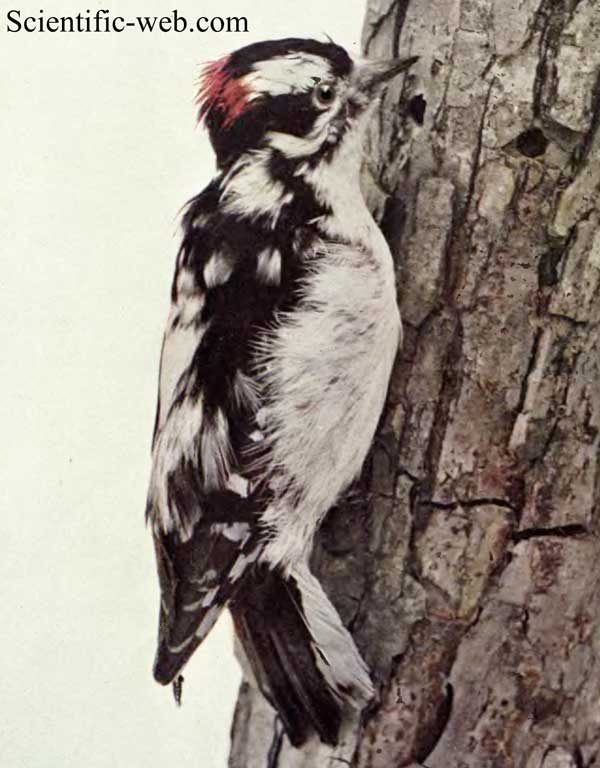Picoides pubescens Cladus: Eukaryota Name Picoides pubescens (Linnaeus, 1766) Reference Systema Naturae ed.12 p.175 Vernacular names The Downy Woodpecker, Picoides pubescens, is the smallest woodpecker in North America. Adults are mainly black on the upper parts and wings, with a white back, throat and belly and white spotting on the wings. There is a white bar above the eye and one below. They have a black tail with white outer feathers barred with black. Adult males have a red patch on the back of the head whereas juvenile birds display a red cap. Their breeding habitat is forested areas, mainly deciduous, across most of North America to Central America. They nest in a tree cavity excavated by the nesting pair in a dead tree or limb. These birds are mostly permanent residents. Northern birds may migrate further south; birds in mountainous areas may move to lower elevations. Downy Woodpeckers roost in tree cavities in the winter. Downy Woodpeckers forage on trees, picking the bark surface in summer and digging deeper in winter. They mainly eat insects, also seeds and berries. In winter, especially, Downy Woodpeckers can often be found in treed suburban backyards and will feed on suet at birdfeeders. References * BirdLife International (2004). Picoides pubescens. 2006. IUCN Red List of Threatened Species. IUCN 2006. www.iucnredlist.org. Retrieved on 11 May 2006. Database entry includes justification for why this species is of least concern * Moore, William S.; Weibel, Amy C. & Agius, Andrea (2006): Mitochondrial DNA phylogeny of the woodpecker genus Veniliornis (Picidae, Picinae) and related genera implies convergent evolution of plumage patterns. Biol. J. Linn. Soc. 87: 611–624. PDF fulltext * Weibel, Amy C. & Moore, William S. (2005): Plumage convergence in Picoides woodpeckers based on a molecular phylogeny, with emphasis on convergence in downy and hairy woodpeckers. Condor 107(4): 797–809. doi:10.1650/7858.1 (HTML abstract) Source: Wikipedia, Wikispecies: All text is available under the terms of the GNU Free Documentation License |
|

